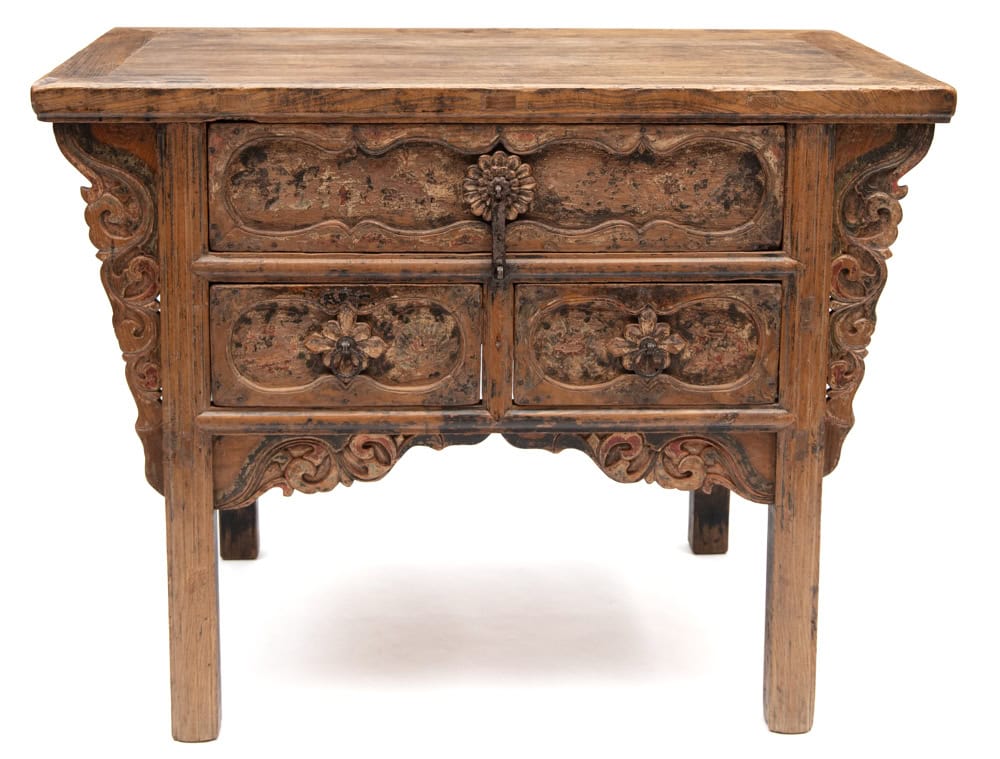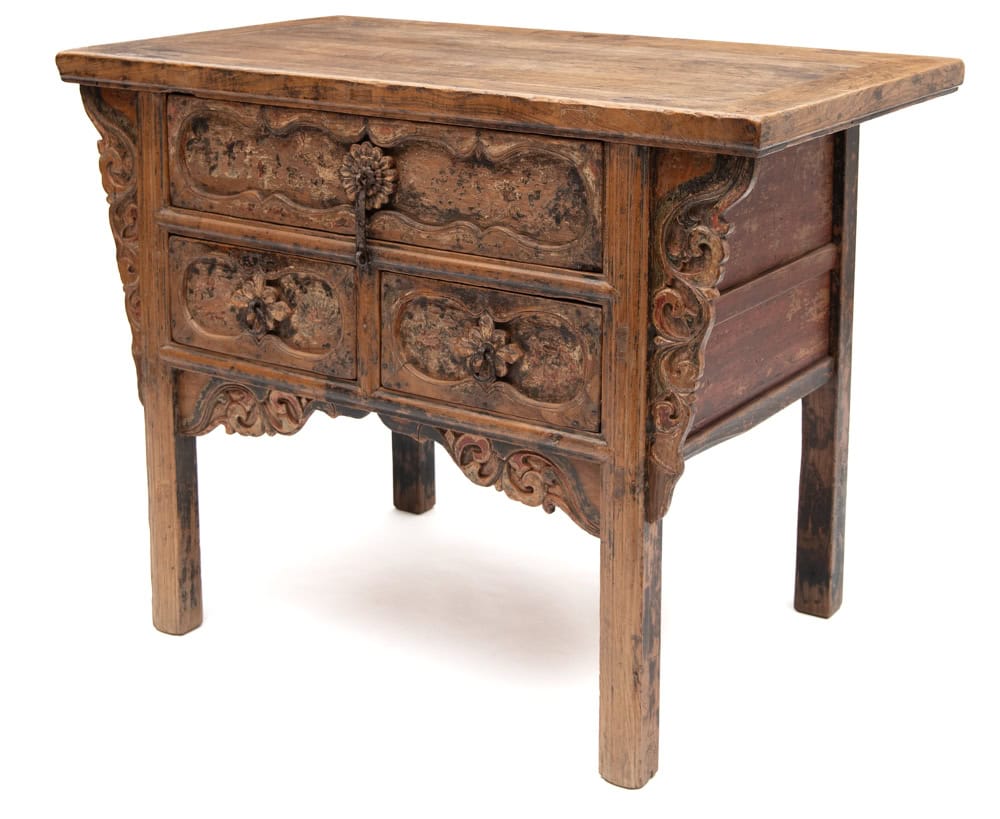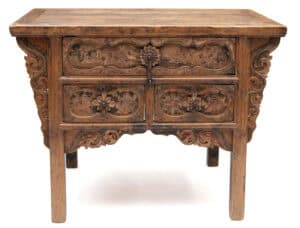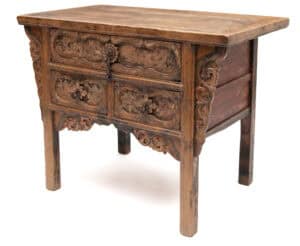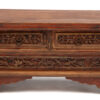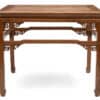Three drawer lacquered altar table with carving
$4,650.00
18th century
- elm wood
- 113cm W x 66cm D x 87cm H
Generously proportioned table with original metal fittings and remnants of lacquer. Central medallion of chrysanthemum symbolises a wish for long life.
A shipping fee is calculated to deliver this item to the metropolitan areas of Brisbane, Sydney, Melbourne, Adelaide and Perth. Contact us to arrange a quote for delivery to other areas.

